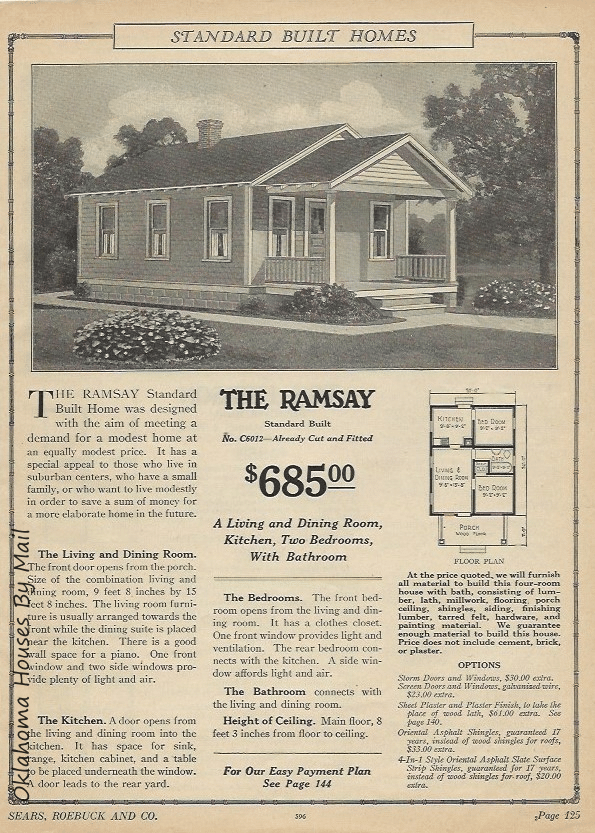The Legacy of Sears Catalog Homes
From its inception in 1908 until 1940, Sears, Roebuck and Company evolved from a retail powerhouse to an innovative housing provider through its mail-order catalog homes. These homes, ranging from charming bungalows to distinguished colonial revivals, provided many Americans with the opportunity for affordable homeownership.
This article delves into the fascinating history, lasting influence, and modern-day value of Sears catalog homes, alongside practical tips for their marketing.
The Emergence of Sears Catalog Homes
Sears introduced its first Modern Homes Catalog in 1908, allowing potential homeowners to select from a variety of architectural styles. Buyers could place orders for complete home kits, which were then shipped directly to them.
In the catalog’s debut year, a typical home kit was priced around $650, equivalent to roughly $22,000 today, excluding land and installation costs. The kits included high-quality, pre-cut materials along with detailed building instructions, enabling families to assemble their dream homes with relative ease.
Growth Through the Decades
The 1910s marked a pivotal point for Sears as the company refined its production methods and established regional warehouses for shipping. Sears Modern Homes gained traction, eventually diversifying to feature about 370 different models that catered to various preferences and budgets.

The 1920s saw a surge in sales, driven by economic prosperity and the appeal of purchasing homes via mail order. Notably, input features like electrical wiring and plumbing fixtures were introduced, catering to a growing demand for modern conveniences.
Challenges and Downturns
Despite embracing innovation, sales dwindled during the Great Depression of the 1930s. Sears adjusted its offerings to include smaller, budget-friendly homes; however, it ultimately ceased the sale of home kits in 1940, closing a significant chapter in American housing history.
Identifying a Sears Kit Home Today
Modern homeowners and real estate enthusiasts may wonder how to determine the origins of a home associated with Sears. Here are some steps to identify a Sears kit home:
- Examine Construction Elements: Look for distinctive architectural styles tied to Sears homes, such as Craftsman bungalows and Colonial Revivals, that feature properly cut construction materials.
- Search for Markings: Check for stamped lumber or shipping labels concealed behind trim work or in less visible areas. Unique identifiers can signal a Sears home.
- Research Historical Records: Investigate the property’s history through local archives and land registries to trace potential links to Sears catalogs.
- Consult Experts: When in doubt, reach out to historians, preservationists, or local architectural historians specializing in catalog homes.
The Valuation of Sears Homes
Although the production of end-to-end home kits has stopped for decades, many Sears houses still exist and can attract substantial buyer interest today. These homes typically command prices ranging from $300,000 to over $1 million, depending on their condition, location, and historical significance.
Examples of Recent Sales
Here are some notable sales of Sears homes over the past year:
3325 Warringham Ave, Waterford, Michigan
A beautifully preserved Lewiston home, showcasing classic design elements.
6522 33rd St, Berwyn, Illinois
This cozy Vallonia model recently sold for nearly $250,000, featuring charming interior spaces.
418 Ann St, West Chicago, Illinois
A well-maintained Barrington home, notable for its stunning traditional architecture.
327 Geneva Rd, Glen Ellyn, Illinois
A Colchester model known for retaining its original features, sold quickly in the competitive market.
Marketing Strategies for Sears Homes
For real estate agents and homeowners looking to sell a Sears kit home, consider the following marketing strategies:
- Share the History: Create informative materials that educate buyers on the significance and charm of Sears homes.
- Highlight Quality: Use descriptors that underline unique craftsmanship, quality materials, and historical architecture in listings.
- Connect with Niche Audiences: Target enthusiasts of historical architecture and vintage homes to build market interest.
- Create Virtual Tours: Utilize digital tools and media to showcase your listings effectively.
- Utilize Social Media: Promote the uniqueness of Sears homes across various social platforms to broaden your reach.
Frequently Asked Questions (FAQs)
Can you still buy houses from Sears?
Currently, Sears no longer sells home kits, as it discontinued this business in the 1940s. However, many original kits remain in existence.
How can you tell if your house is a Sears house?
Look for features like stamped lumber or distinct architectural styles found in Sears catalogs. Researching the house’s history can also help verify its origins.
In which states are Sears houses most prevalent?
Sears homes are primarily found in states such as Illinois, Michigan, and Ohio, with notable examples also in California, Massachusetts, and New York.
Are Sears houses today still valuable?
Yes, they continue to be valuable due to their historical significance and distinctive craftsmanship, often appreciating in value over time.
Your Insights
Do you have experience with Sears homes? Whether you own one, are considering a purchase, or have resold one, we welcome your stories and insights in the comments section below!
Sources
1. Boston.com
2. USA Today

